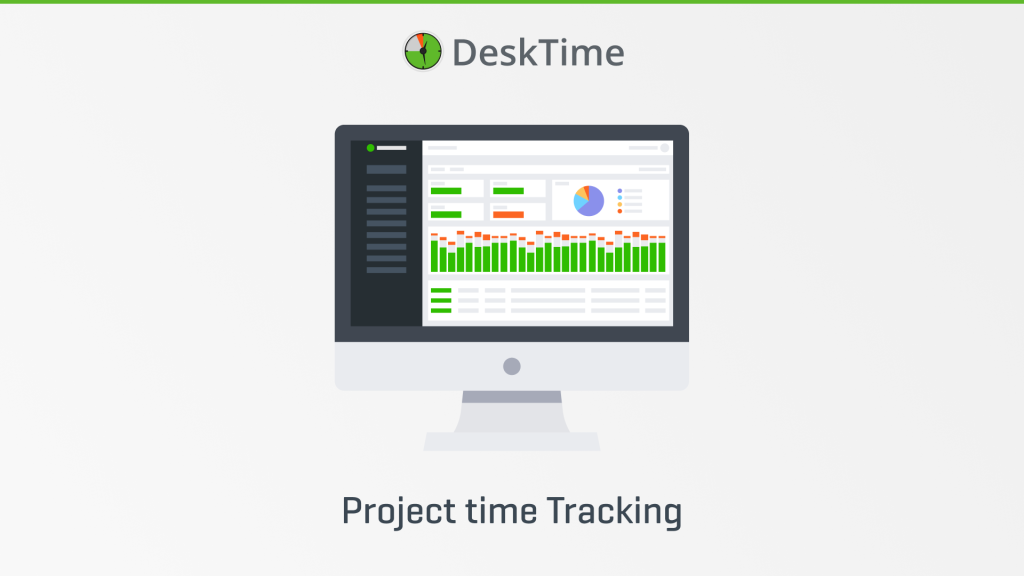The ultimate beginner guide to project cost estimation

Embarking on a new project is an exciting venture, but amidst the enthusiasm lies a critical aspect that can make or break your endeavors – project cost estimation. For those just starting in project management, understanding the concept of project estimates is fundamental. Without this knowledge, managing projects and sailing their ships toward prosperous shores becomes much more difficult. We’ve crafted a beginner guide to project cost estimation to make your life easier.
This manual will explore key concepts and methods that constitute a solid foundation for accurate and efficient estimating. Whether you’re a freshly baked project manager or a professional looking to grasp the essentials, this article will tell you how to estimate project costs.
Want to get the most out of your time?
Try DeskTime for free!
Try free for 14 days · No credit card required.
By signing up, you agree to our terms and privacy policy.

Table of contents:
Definition of project cost estimation
Now, what exactly is project cost estimation?
Simply put, project cost estimation is the process of forecasting the necessary resources and their quantity and cost to fulfill a project. Its purpose is to provide an initial understanding of the potential costs associated with the project and help in budgeting, resource allocation, and project planning.
Project cost estimation sometimes gets mixed up with project cost calculation, but they’re not the same thing. The latter assesses and analyzes the actual project costs compared to the estimates and does so retrospectively.
Importance of accurate project estimates

You probably agree that estimating project costs feels like something that needs to be done – but why, exactly?
- Budgeting – project cost estimation enables the prediction of expenses, which is essential for creating an accurate budget.
- Resource allocation – when the potential costs are known, resources can be allocated better, ensuring that human resources, equipment, materials, and other resources are available when needed.
- Risk identification – project estimates also help to identify potential risks and pain points connected to various aspects of the project, from budget overruns to other resource shortages, which helps in being prepared for such situations and coming up with a plan B.
- Setting realistic goals – knowing project estimates can significantly contribute to creating realistic project objectives and strategies that are not overly optimistic or delusional.
- Client expectation management – this aligns with everything mentioned above, but project estimates can be crucial in managing client expectations. With them, it’s not just your personal predictions on how the project could go and how much it could cost but a more structured and realistic overview that the client can take into account
- Performance measurement – estimates can serve as a baseline for comparing actual project and performance throughout the project execution and help make data-based decisions.
How to estimate project costs?

We know what project cost estimation is and why it’s necessary. Now, it’s time to learn a thing or two about how exactly to estimate costs. Shall we?
Types of project estimates
Various elements should be considered within the scope of a potential project. Here are several basic categories of project estimates.
- Cost estimates
- Direct costs – includes cost estimates for human resources, materials, and equipment.
- Indirect costs – overhead costs (expenses that are not directly related to the project itself but are essential for overall operations of the business that’s working on the project) and administrative costs (management, administration, support)
- Contingency costs – an amount of money set aside to cover unforeseen. expenses, a buffer that helps address unexpected changes in the project execution if such come up.
- Time estimates – predicting how long it takes to complete a project successfully. It also includes pinning milestones and creating the overall timeline.
- Resource estimates
- Labor – the number of team members, their hours, and skills required to complete specific tasks.
- Materials and equipment – quantity and cost of materials required and type and amount of equipment needed.
- Risk estimates – identifying the potential risks that could impact the project timeline, outcome, costs, etc. It’s also worth adding numerical value to the risks identified to see how their occurrence could affect the project’s budget.
- Scope estimates – this includes the size and complexity of the project and identifying project deliverables and requirements.
- Communication estimates – this is more connected to communication with stakeholders (the frequency of status updates, meetings, and reporting). However, inner communication could also be considered, for example, whether it will be weekly team meetings, how often the team will be asked to provide status updates on their work, and more.
Additionally, when planning a project and communicating it to the potential client, there are three terms you can use to talk about the project estimates effectively.
- Ballpark estimate – a rough and informal calculation of the project cost and timeline, used when there’s a lack of details for accurate estimates, but the client wants to know the approximate scope.
- Budget estimate – usually comes after discussing the ballpark estimate with the client. When you have more details regarding the project, a budget estimate can be created and further discussed with the client.
- Statement of work estimate – a statement of work is a formal document that thoroughly describes the upcoming project (deliverables, work to be done, timeline, etc.). Thus, the statement of work estimate is the cost of completing the project as outlined in the document.
Five project cost estimating methods (and two extra to integrate if needed)
When it comes to project cost estimating methods, there are plenty to choose from. It all comes down to the specifics of the project and your preferences.
1. Analog estimating
This method draws estimates using historical data from completed projects similar to your project. Analog estimating is often used if there’s a limitation on details or if the new project is very similar to something already completed. Work smarter, not harder, you know.
Pros: Time-effective and suitable when the information is limited but an estimate is needed.
Cons: It might not be accurate as every project is different. Plus, if the historical project data isn’t valid, the new estimates could also be faulty.
2. Bottom-up estimating
With the bottom-up method, the project is divided into smaller work packages for which the estimates are calculated. Then, the smaller chunks of estimates are summed, making the total. However, the bottom-up method will only be useful if you have plenty of details about the planned project.
Pros: With this method, you can create a detailed and accurate estimate.
Cons: It takes a lot of time and resources to complete.

3. Three-point estimating
This approach compiles three types of estimates to receive the ultimate cost estimate – optimistic, pessimistic, and realistic. Then, the average of these estimates is calculated.
Optimistic estimates represent the best-case scenario – the costs, time, and resources used if everything goes extra smoothly. The pessimistic estimates are the results you can expect if everything goes south. And realistic estimates stand for results (costs, time, resources, etc.) you’d receive if you encountered some challenges, but overall, the project went smoothly.
The best, worst, and realistic scenarios can be applied to each and every position in a project to receive the total optimistic project estimate, pessimistic, and realistic one. Then, the average can be calculated, concluding the three-point estimating.
Pros: Useful when the client is asking to provide more detailed time estimates for the project, and it’s also risk-reducing as it considers several options of how things can go.
Cons: Time-consuming and can unnecessarily complicate estimate calculation for straightforward projects.
4. Parametric estimating
Parametric project cost estimating uses historical project data and statistics to estimate the amount of resources (time, money, equipment, human resources, and others) needed to complete a project. It may seem similar to the analog estimating described above, but there’s a big difference.
The analog method uses historical project data to estimate a similar upcoming project without much calculation and going into differences. However, parametric estimating uses historical data but applies it thoroughly to the new project, tweaking the estimates according to the specifics. It involves using mathematical models and formulas to predict and calculate the expected values.
Pros: Systematic and trustworthy.
Cons: Heavily relies on accurate historical data.
5. Cost of quality estimating
This method is used to calculate the estimated costs of 1) delivering the project in a certain quality and 2) if the project fails to meet the required standards. Cost of quality estimating is the most useful for estimating project costs in which the quality of deliverables is crucial.
Pros: Helps with proactive quality management of project deliverables.
Cons: Requires a deep understanding of quality management principles.
Extra: Expert judgment
We wouldn’t call it a project cost estimating method – it’s an extra approach you can use if you’re unsure about the estimates you’ve drafted. With expert judgment, you go to an expert and ask for their assessment regarding the project cost estimates.
Pros: Someone’s hands-on experience can be precious.
Cons: It’s a subjective opinion.
Extra: Vendor bid analysis
Vendor bid analysis works excellently if you want to form a more comprehensive idea of what certain positions of your project cost. Therefore, you conduct a price survey or compare accessible data from different vendors to estimate the costs of specific project components.
Pros: You access real-life data and costs from actual vendors.
Cons: Market conditions can influence the bids quite a lot.
Project estimate calculation template
Now that we’ve covered some project cost estimation theory, let’s go for a more practical approach.
This article section offers a step-by-step estimation template with an imaginary project as an example. While the template doesn’t specifically refer to any of the estimation methods mentioned above, it does use elements from bottom-up estimating.
Note: This is a semi-realistic project cost estimation – the pricing, hourly rates, and other components can differ significantly depending on the industry, country, and so on. Hence, take the numbers you see with a grain of salt.
First, let’s jot down some basics of our upcoming imaginary project.
- Project name: The Imaginary Project
- Project manager: Imagine Imaginson
- Project start date: January 3rd, 2024
- Project end date: March 3rd, 2024
- Project duration: 9 weeks
Moving on to listing project cost categories.
- Personnel costs
- Equipment, tools, and materials
- Subcontractor costs (if any)
- Contingency
The next step this template foresees is crafting a table/excel sheet. We’ll be adding each project cost category, starting with personnel cost.
| Role | Hours per week | Number of working weeks | Hourly rate ($) | Total cost ($) Formula: Weekly hours * Working Weeks * Hourly Rate = Total cost |
| Project manager | 40 | 9 | 28 | 10,080 |
| Project manager’s assistant | 20 | 9 | 10 | 1,800 |
| Graphic designer | 40 | 9 | 25 | 9,000 |
| Copywriter | 30 | 9 | 22 | 5,940 |
| Social media manager | 40 | 9 | 20 | 7,200 |
| Total personnel cost: | 34,020 | |||
Moving on to cost estimates for equipment, tools, and materials.
| Item | Quantity | Unit cost ($) | Total cost ($) Formula: Quantity * Unit cost |
| Adobe Creative Cloud monthly subscription | 3 | 59.99 | 179.97 |
| Canva Pro monthly subscription | 3 | 11.99 | 35.97 |
| Editing services | 1 | 2,000 | 2,000 |
| More items here | … | … | … |
| Total equipment, tools, and material cost: | 2215.94 (+ X$) | ||
Quite a few projects use subcontractors, as outsourcing specific skills and knowledge can be convenient and cost-effective. Here’s a table calculating estimates related to subcontractor cost.
| Subcontractor | Description | Cost ($) |
| Photography services | Several photoshoots needed for the project | 4,500 |
| Influencer management | Managing micro-influencer campaigns throughout the project | 6,000 |
| Social media ad agency | Social media ads and their management | 3,450 |
| More subcontractors here | … | … |
| Total subcontractor cost: | 13,950 (+ X$) | |
Another thing to consider and add to the total project cost estimations is contingency – money to cover unexpected expenses.
| Description Money set aside to cover unexpected expenses | Percentage (%) *Contingency cost percentage varies depending on the riskiness of a project | Cost ($) |
| In the case of this imaginary project, we’ll set aside some money to cover unexpected delays in content creation, additional budget for social media ads, and unforeseen expenses | 5%* | Formula: Total estimated cost (the sum of all the estimated expenses we calculated above) * Percentage |
| Total contingency: | 2509.30 | |
We have now gone through the list of the most essential project cost estimates. The last thing to do is to sum up all the costs from the categories above, including contingency, to receive our total project cost estimate.
Total project cost estimate (for the Imaginary project):
34,020 + 2215.94 + 13,950 + 2509.30 = 52695.24 ($)
Bonus: Bill your project with DeskTime

After you’ve estimated the project costs and started to work on the actual project, it’s time to think about the next crucial step – project billing.
Manually keeping account of the hours you’ve spent working on the project can be challenging, if not impossible. Plus, not having reports or other solid data besides your manual time estimates allows your clients to oppose project cost calculations.
We recommend using time tracking software with an in-built project billing feature to avoid unpleasant surprises. DeskTime is one of the options you can consider. Here’s why.
DeskTime tracks your work hours automatically, which is convenient considering that working with projects is stressful enough, and manual time tracking could only make things more hectic. You can add team members and their hourly rates, and DeskTime will automatically calculate how much each project costs for the company based on the time spent on it and the rates you’ve set.
With the software, you’ll also be able to access reports, adding a new level of accountability to your relationship with clients.

Want to know how DeskTime works?
Become a DeskTime power-user in no time.
Diving into the project cost estimation waters
We genuinely hope that this guide on project cost estimation has given you a clear idea of how it can be done and why you should put extra effort into estimating the costs. As you now possess valuable insights to navigate these waters effectively, the only thing left is to dive right into the exciting project world. Good luck!
Did you find this article useful? Give it a clap!
Psst! You can clap more than once if you really loved it 🙂